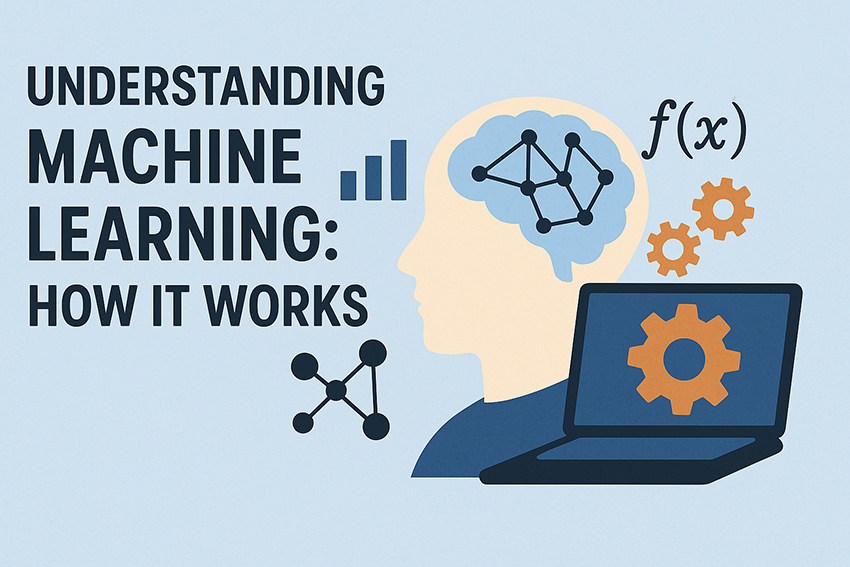Understanding Machine Learning: How It Works
Machine learning (ML) might sound like something out of a science fiction movie, but it’s actually a powerful tool that’s already all around us. From suggesting movies you might like on Netflix to helping your email filter out spam, machine learning is changing the way we interact with technology. But what exactly *is* machine learning, and how does it work? This blog post will break down the basics in an easy-to-understand way, so you can grasp the core concepts of this fascinating field.
What is Machine Learning?
At its simplest, machine learning is a type of artificial intelligence (AI) that allows computers to learn from data without being explicitly programmed. Instead of telling the computer exactly what to do in every situation, we feed it lots and lots of data, and it figures out the rules and patterns on its own.
Think of it like teaching a dog a new trick. You don’t give the dog a list of instructions written in code. Instead, you show the dog what you want it to do, reward it when it gets it right, and correct it when it gets it wrong. Eventually, the dog learns the trick through trial and error. Machine learning algorithms work in a similar way.
The Core Concepts of Machine Learning
To understand how machine learning works, it’s helpful to know some of the key concepts:
- Data: This is the raw material that fuels machine learning. It can be anything from images and text to numbers and sounds. The more data you have, the better the machine learning model can learn.
- Algorithms: These are the sets of rules that the computer uses to learn from the data. There are many different types of algorithms, each designed for different types of problems.
- Models: This is the result of the learning process. A model is a representation of the patterns and relationships that the algorithm has found in the data.
- Training: This is the process of feeding data to the algorithm so that it can learn. During training, the algorithm adjusts its internal parameters to improve its accuracy.
- Prediction: Once the model is trained, it can be used to make predictions about new data. For example, a model trained to identify spam emails can be used to predict whether a new email is spam.
Types of Machine Learning
There are several main types of machine learning. Here are a few of the most common:
Supervised Learning
In supervised learning, the algorithm is trained on labeled data. This means that each piece of data is tagged with the correct answer. For example, if you were training a model to identify cats in images, you would provide the algorithm with a collection of images, and each image would be labeled as either “cat” or “not cat.” The algorithm then learns to associate the features of the images with the correct labels.
Unsupervised Learning
In unsupervised learning, the algorithm is trained on unlabeled data. This means that the data is not tagged with the correct answers. The algorithm must find the patterns and relationships in the data on its own. A common use case is clustering, where the algorithm groups similar data points together.
Reinforcement Learning
Reinforcement learning is a type of machine learning where an agent learns to make decisions in an environment to maximize a reward. The agent learns through trial and error, receiving feedback in the form of rewards or penalties. This is often used in robotics and game playing (like teaching a computer to play chess or Go).
How Machine Learning Works: A Step-by-Step Example
Let’s consider a simple example: predicting whether a customer will buy a product based on their age and income. This is a supervised learning problem.
- Gather Data: Collect data on customers, including their age, income, and whether they purchased the product.
- Prepare Data: Clean and format the data so that it can be used by the algorithm.
- Choose an Algorithm: Select a suitable algorithm, such as a decision tree or logistic regression.
- Train the Model: Feed the data to the algorithm so that it can learn the relationship between age, income, and purchase behavior.
- Evaluate the Model: Test the model on a separate set of data to see how well it performs.
- Deploy the Model: If the model performs well, deploy it to predict whether new customers will buy the product.
Real-World Applications of Machine Learning
As mentioned earlier, machine learning is already being used in a wide variety of applications, including:
- Recommendation Systems: Suggesting products, movies, or music based on user preferences.
- Spam Filtering: Identifying and filtering out spam emails.
- Fraud Detection: Detecting fraudulent transactions.
- Medical Diagnosis: Assisting doctors in diagnosing diseases.
- Self-Driving Cars: Enabling cars to navigate and drive themselves.
The Future of Machine Learning
Machine learning is a rapidly evolving field with enormous potential. As technology continues to advance, we can expect to see even more innovative and impactful applications of machine learning in the future. This includes areas like personalized medicine, climate change modeling, and advanced robotics.
Conclusion
Understanding the basics of machine learning is becoming increasingly important in today’s world. While the field can seem complex, the core concepts are relatively straightforward. By understanding how machine learning works, you can appreciate the power and potential of this transformative technology. From simple spam filters to self-driving cars, machine learning is already changing our lives, and its influence will only continue to grow in the years to come.






